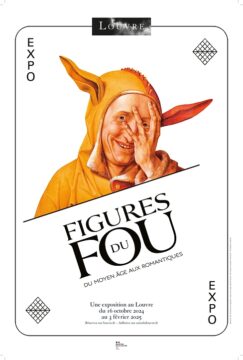Colin Jones at Literary Review:
 We tend to view the figure of the medieval and Renaissance fool or jester through 19th-century filters – to think of Victor Hugo’s Quasimodo and Verdi’s Rigoletto. Perhaps the show’s most striking achievement is to transcend these anachronistic and wistful habits and to reveal how much more complicated – and fascinating – the world of the fool has been.
We tend to view the figure of the medieval and Renaissance fool or jester through 19th-century filters – to think of Victor Hugo’s Quasimodo and Verdi’s Rigoletto. Perhaps the show’s most striking achievement is to transcend these anachronistic and wistful habits and to reveal how much more complicated – and fascinating – the world of the fool has been.
The exhibition’s organisers, Elisabeth Antoine-König and Pierre-Yves Le Pogam, have chosen not to approach the subject through the anachronistic prism of mental illness. As they observe, the category of ‘natural fool’ in earlier times was often held to include the mentally or physically impaired (it could encompass cultural outsiders as well). They place the exhibition’s emphasis on ‘artificial fools’ – those who assumed a fool’s identity. Playing the fool might be done with passionate sincerity – by the likes of St Francis of Assisi, self-declaredly ‘God’s fool’ – or with sardonic insouciance and comic and sometimes malevolent intent.
Court jesters, masters of the art of playing the fool, are at the heart of the show.
more here.
Enjoying the content on 3QD? Help keep us going by donating now.
